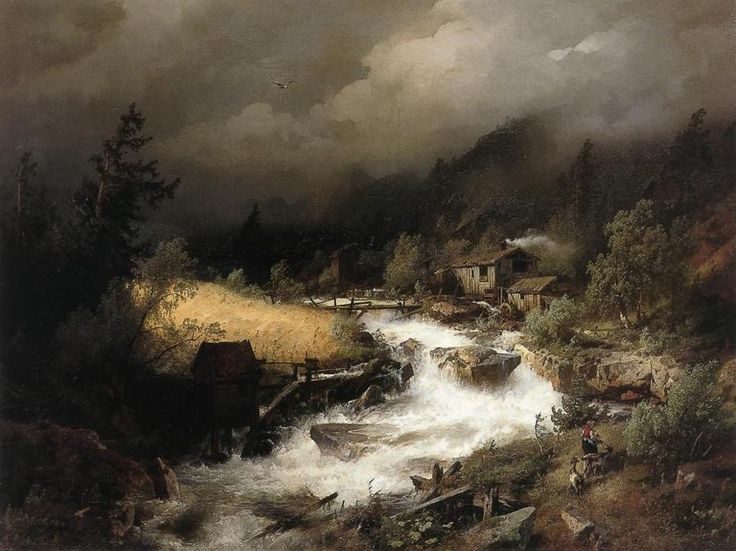I have been a great admirer of many 19th Century landscape artists such at the German born Hermann Herzog (1832-1932) who moved to the US in the late 1860's. This is his "The Old Water Mill", oil on canvas, 140 x 104 cm.
As a painter of moods, Herzog would appear to be amongst the best. But I'm wondering if he is achieving little more than recording what's there. Sure, it's likely this work was completed in the studio where he could impose his own deliberations, but there is a question as to how much the artist is revelling of himself in this work.
The Sky's Beginning To Bruise Oil On Canvas 109 cm x 129 cm
I completed the above painting in 2014, and it's based very loosely on a photo I saw in an encyclopaedia in the 1980's. The instant I saw that image, it registered with me and I thought "I know this place", or the emotion it evoked. It was is if I'd been there, even though it's a scene of the Norwegian tundra - a country I've never visited.
Luckily I still had access to that encyclopaedia when I decided to explore the possibilities of that scene a few years ago. Yes, it's almost appallingly lonely, yet not entirely melancholy as it's a place where you can lose yourself in the enormity of the world we live in. A place to absorb nature in its purist form - a place to chill out (both literally and metaphorically).















